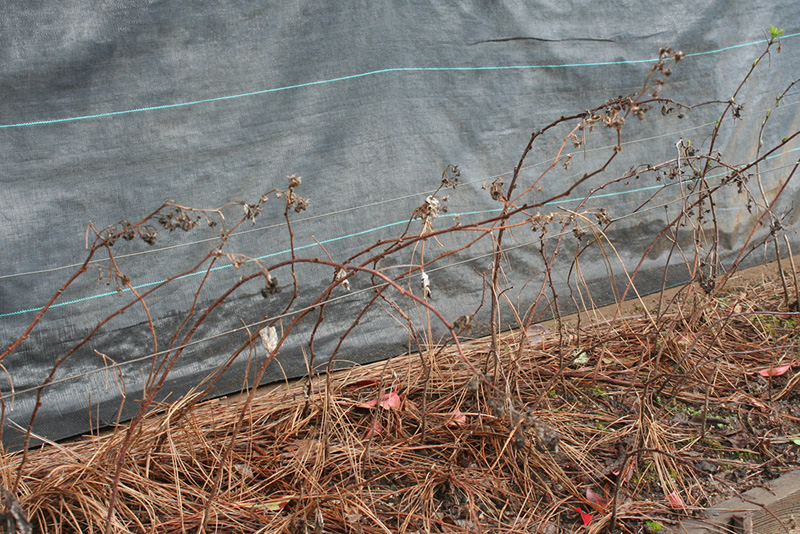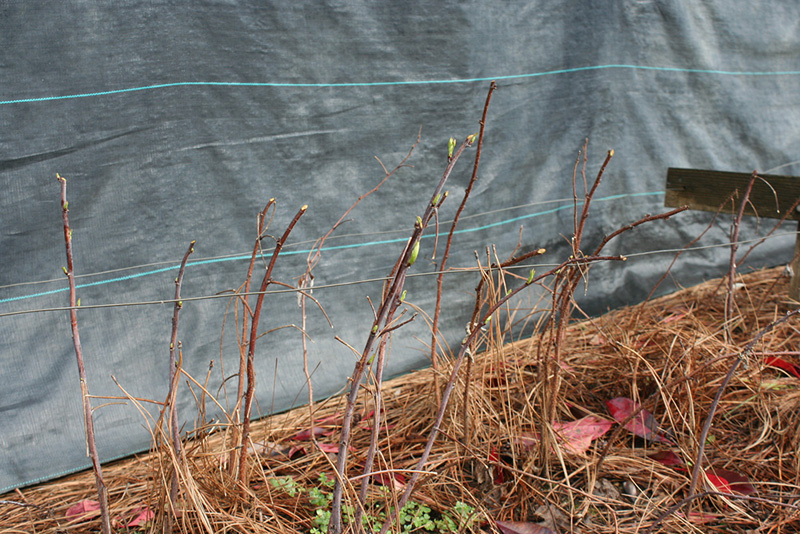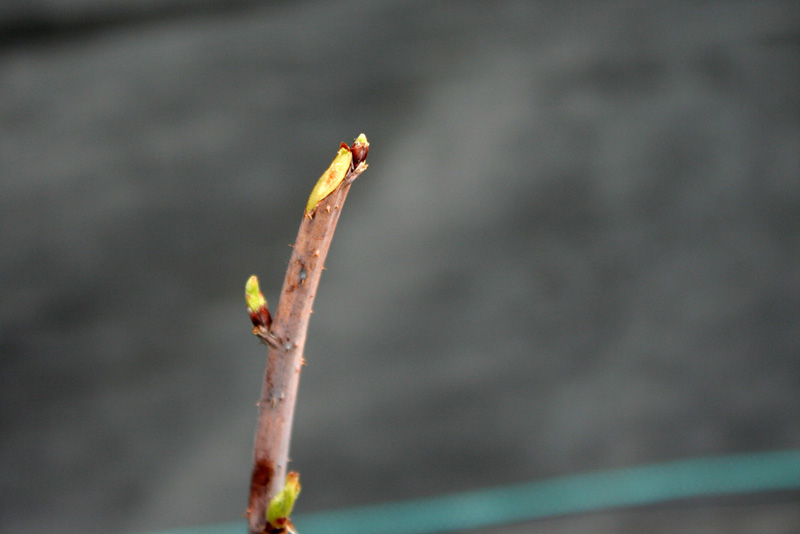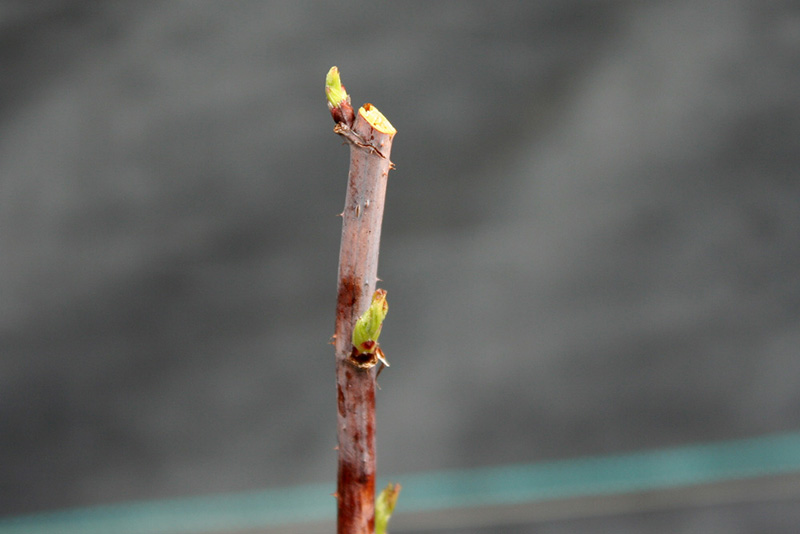Growing Raspberries 101
Is there anything as delicious as the rich, tart-sweet taste of fresh raspberries? They’re so good fresh on ice cream, cereal, salads, in pies and jams, and a wide assortment of other mouth watering dishes.
The good news for us is that raspberries are relatively easy to grow in our area of Oregon. So, with a minimal amount of care you’ll be enjoying berries from your home garden for years to come.
The Right Place
When selecting a place in your yard for raspberries just remember two key conditions for the best success. These plants want full sun and soil that drains well.
Also, most raspberry plants will grow and produce better if they are grown with the support of a trellis. Raspberry canes can get fairly tall, 3-4′, so plan accordingly.
Planting Raspberries
February to April, when the plants are dormant, is the best time to plant raspberries. At Young’s our bare root raspberries arrive at the end of January. Planting bare root canes is the way to go. They have good, healthy root systems that haven’t been pruned to fit into a bag. They will adjust to the soil in your yard faster than when in a pot and it’s more economical than potted plants.
To avoid any unnecessary stress on the plants, transplant bare root canes as soon as possible after purchasing and during cool weather. As temperatures begin to warm up, plant early in the evening, or on a cloudy day. When things are really warm, late spring or summer, planting bare root isn’t a good idea. However, you can still plant potted berries.
- Dig a hole that is about 1′ wide and deep.
- Mix the soil from the hole with some planting compost (only UP TO 50%). This will help improve drainage. If you have heavy clay soil you’ll want to amend a larger hole.
- Use a transplant food in the bottom of the hole to get your plants off to a good start and help minimize transplant shock.
- Put your raspberry plant in the hole and back-fill. Since you’ve added some material with the planting compost it should create a slight mound. This will help prevent water from collecting at the plant crown.
- Space additional raspberries 2-3′ apart.
- After transplanting water each plant thoroughly, even if it’s raining.
Growing Raspberries
Raspberries need plenty of nutrients, especially nitrogen, to produce well. After you plant in the spring you’ll fertilize them in June. After that feed them every March and June with a good berry food.
Raspberries like moisture. Water them consistently. The best way to water is with a drip system that will get the water right where it needs to go.
Raspberry plants don’t like to compete with weeds. To cut down on the weeds you can mulch around your plants. This will also help hold in moisture during the summer.
Your plants will begin to produce fruit in their second season. The berry harvests will become larger as your plants become more established.
Pruning Raspberries
There are two types of raspberries: single crop and everbearing. Single crop, or summer bearing varieties, like Tulameen & Willamette, produce one large crop per season. Everbearing, or fall bearing varieties like Amity, Caroline, Heritage & Fall Gold produce two smaller crops in the summer and fall with exact times depending on the variety. These different types are pruned differently.
With all raspberries you will want to cut away any shoots that stray from your designated raspberry area, or any canes that are damaged.
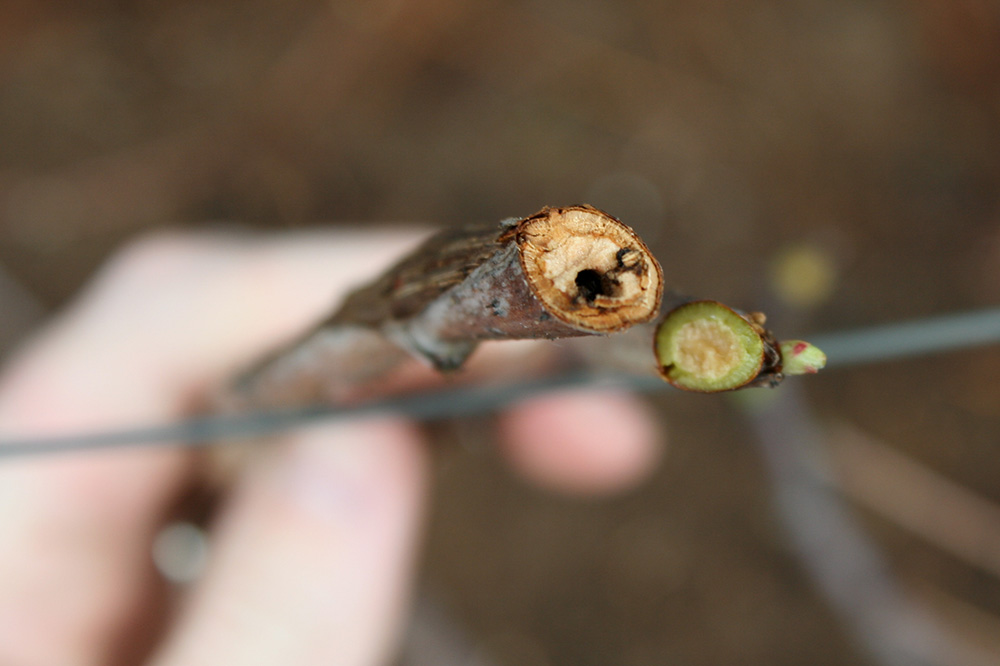
Single Crop
Single crop raspberries are especially easy to prune. They produce on two year old canes. These are thicker canes with brown stems. Once an individual cane has produced it will not have berries again.
- In late winter/early spring cut out any dead canes (they will look gray with peeling bark and remnants of little lateral fruiting branches).
- At the same time, thin the canes to leave the thickest, healthiest canes at 3-4″ apart. These are the canes that will produce fruit in the summer.
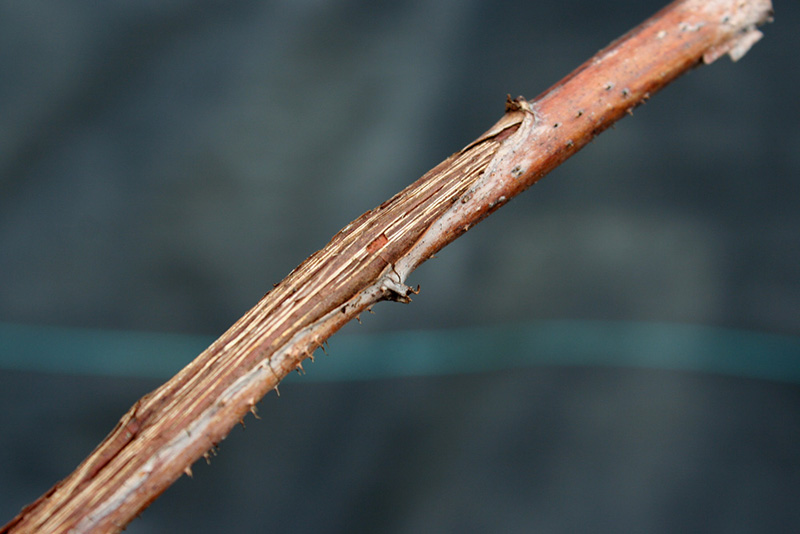
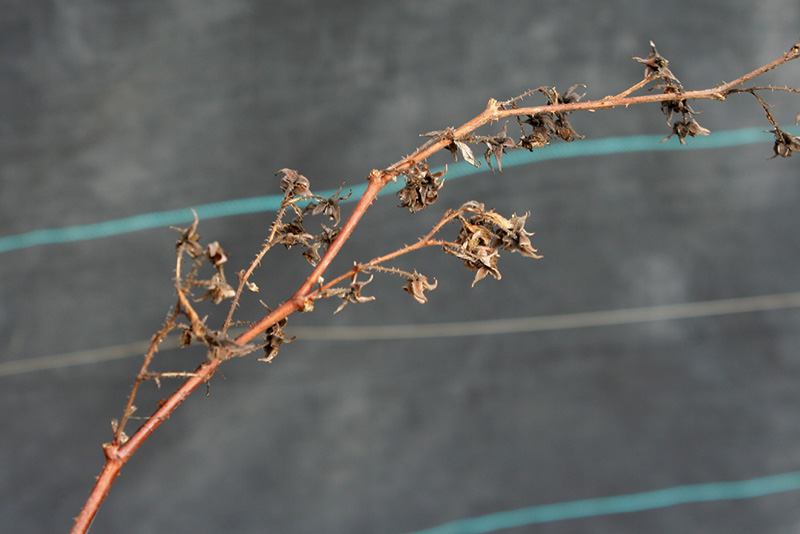
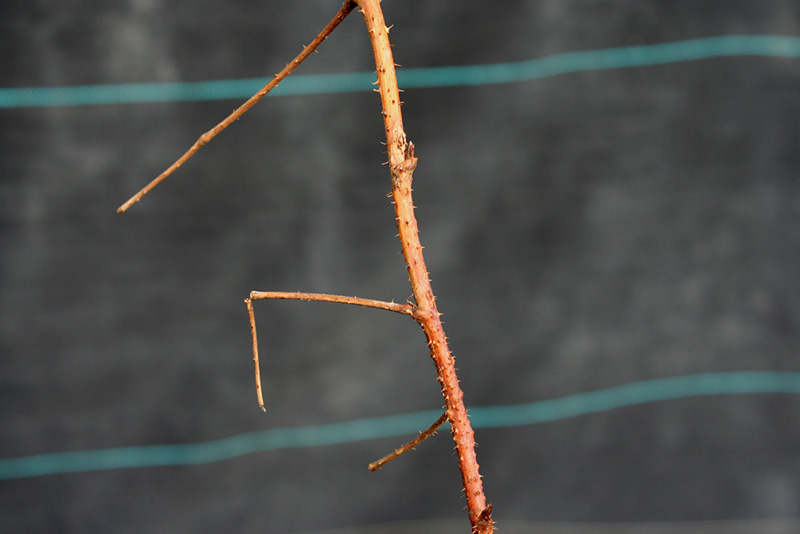
Everbearing
Everbearing varieties produce berries on a mixture on one and two year old canes. There are two different ways that these varieties could be pruned.
The easy way is to prune them for a single, larger crop.
- In late winter cut ALL canes back to ground level. This eliminates the summer crop, but produces a larger, earlier fall crop.
- In early summer thin the canes so the strongest canes are 3-4″ apart.
Otherwise, prune them for two crops.
- In late winter cut out any of the completely dead canes. These will be the thicker, rigid canes.
- At the same time trim the rest of the canes down to about 18″ tall. This will remove the fruited portion of the canes.
- In early summer, after your first harvest, thin the canes.
When you prune, make the cut just above a bud at a slight angle. cutting too far from a bud, or too close at a sharp angle can lead to bud problems.
